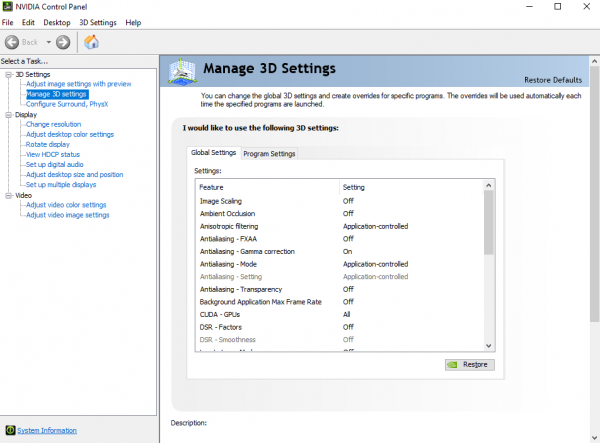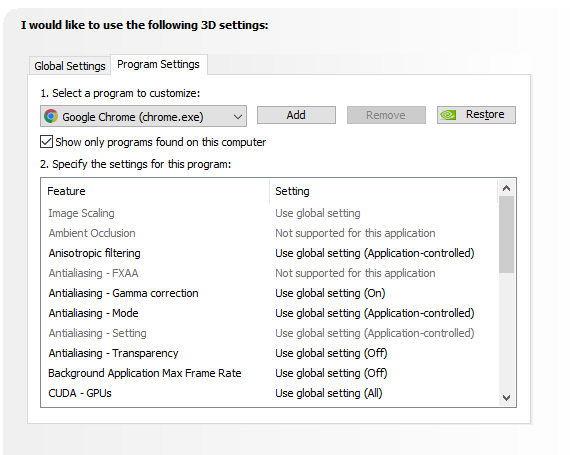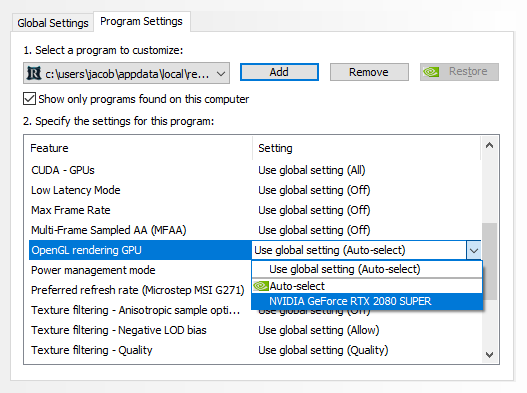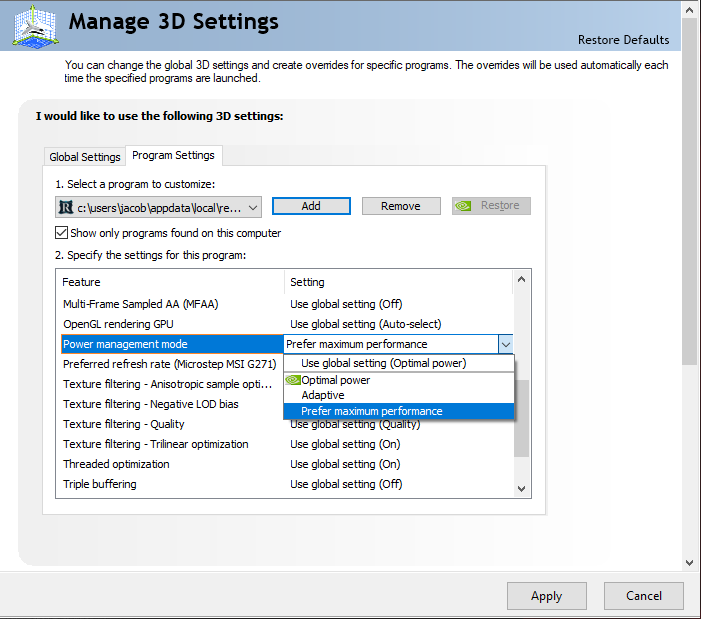OpenGL: Difference between revisions
Jump to navigation
Jump to search
>Jladams No edit summary |
>Peripheral Vision No edit summary |
||
| Line 6: | Line 6: | ||
* Step 1: Open NVIDIA Control Panel | * Step 1: Open NVIDIA Control Panel | ||
* Step 2: Click on Manage 3D Settings | * Step 2: Click on Manage 3D Settings | ||
[[File:NVIDIA Control Panel.png|center]] | [[File:NVIDIA Control Panel.png|center|600px]] | ||
* Step 3: Click on Program Settings | * Step 3: Click on Program Settings | ||
| Line 24: | Line 24: | ||
* Step 1: Open NVIDIA Control Panel | * Step 1: Open NVIDIA Control Panel | ||
* Step 2: Click on Manage 3D Settings | * Step 2: Click on Manage 3D Settings | ||
[[File:NVIDIA Control Panel.png|center]] | [[File:NVIDIA Control Panel.png|center|600px]] | ||
* Step 3: Click on Program Settings | * Step 3: Click on Program Settings | ||
Revision as of 19:55, 23 June 2022
This page contains a short guide to enable OpenGL rendering system via the NVIDIA control panel for those experiencing issues.
OpenGL Rendering Guide
- Step 1: Open NVIDIA Control Panel
- Step 2: Click on Manage 3D Settings
- Step 3: Click on Program Settings
- Step 4: Click on Add and add Redemption
- Step 5: Scroll down and click on the settings for OpenGL Rendering GPU and click on your GPU
- Step 6: Click Apply at the bottom right
Power/Performance Guide
- Step 1: Open NVIDIA Control Panel
- Step 2: Click on Manage 3D Settings
- Step 3: Click on Program Settings
- Step 4: Click on Add and add Redemption
- Step 5: Scroll down and click on the settings for Power Management Mode and click Prefer Maximum Performance (only use this for desktops or laptops when plugged in)
- Step 6: Click Apply at the bottom right




